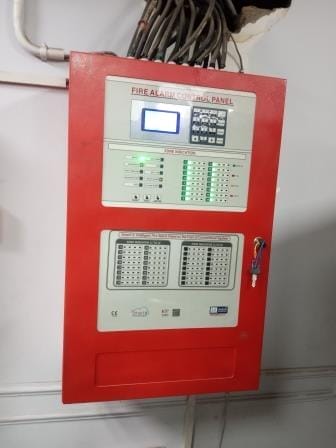Introduction
Fire safety is a critical aspect of ensuring the well-being of individuals and the protection of property. For businesses, it is not only a moral responsibility but also a legal obligation to maintain a safe environment. Conducting a Fire Safety Audit is a proactive approach to assess and enhance fire safety measures in your organization. In this blog, we’ll provide a step-by-step guide on how to conduct a comprehensive Fire Safety Audit to ensure your workplace is prepared to prevent and respond to fire emergencies.

Step 1: Define the Scope and Objectives
Before diving into the audit process, it’s essential to define the scope and objectives of the audit. Determine what areas, buildings, or processes you want to assess for fire safety. Consider the specific goals of the audit, such as compliance with local fire safety regulations, protection of employees, and safeguarding assets.
Step 2: Assemble a Team
Gather a team of individuals with expertise in fire safety. This may include fire safety consultants, facility managers, and other relevant personnel. Assign roles and responsibilities to ensure a systematic and thorough audit.
Step 3: Review Relevant Documentation
Collect and review all existing fire safety documentation, including building plans, evacuation plans, and previous fire incident reports. This step will help you understand the existing fire safety measures and identify areas that may need improvement.
Step 4: On-Site Inspection
Conduct a detailed on-site inspection. Walk through the premises and assess various elements, such as fire exits, emergency lighting, fire extinguishers, alarm systems, and the condition of fire doors. Ensure that these elements comply with relevant regulations and standards.
Step 5: Fire Safety Equipment Assessment
Evaluate the effectiveness and maintenance of fire safety equipment. Check the functionality of fire extinguishers, sprinkler systems, smoke detectors, and fire suppression systems. Make note of any deficiencies or signs of wear and tear.
Step 6: Emergency Response Procedures
Review the organization’s emergency response procedures. This includes assessing the clarity of evacuation plans, the effectiveness of communication systems, and the readiness of personnel to handle fire emergencies. Ensure that employees are well-trained in fire safety procedures.
Step 7: Hazard Identification
Identify potential fire hazards within the premises, such as faulty wiring, chemical storage, or any combustible materials. Address these issues promptly to reduce the risk of a fire incident.
Step 8: Compliance with Regulations
Ensure that the organization complies with local fire safety regulations and codes. This may involve contacting the local fire department to confirm adherence to specific requirements.
Step 9: Report and Recommendations
Compile all findings into a comprehensive report. Include an assessment of existing fire safety measures, identified deficiencies, and recommendations for improvements. Prioritize actions based on their criticality and urgency.
Step 10: Implementation of Recommendations
Work with your team to implement the recommended improvements. This may involve enhancing fire safety systems, conducting employee training, and rectifying any non-compliance issues.
Step 11: Regular Review and Update
Fire safety is an ongoing process. Regularly review and update your fire safety measures to ensure they remain effective and compliant with changing regulations.
Conclusion
A Fire Safety Audit is a crucial step in safeguarding your workplace and protecting the lives and assets within it. By following this step-by-step guide, you can systematically assess your organization’s fire safety measures, make necessary improvements, and create a safer environment for everyone. Remember, fire safety is not a one-time task; it’s an ongoing commitment to ensuring the well-being of your employees and the sustainability of your business.
For more information and any queries, please visit www.elion.co.in



